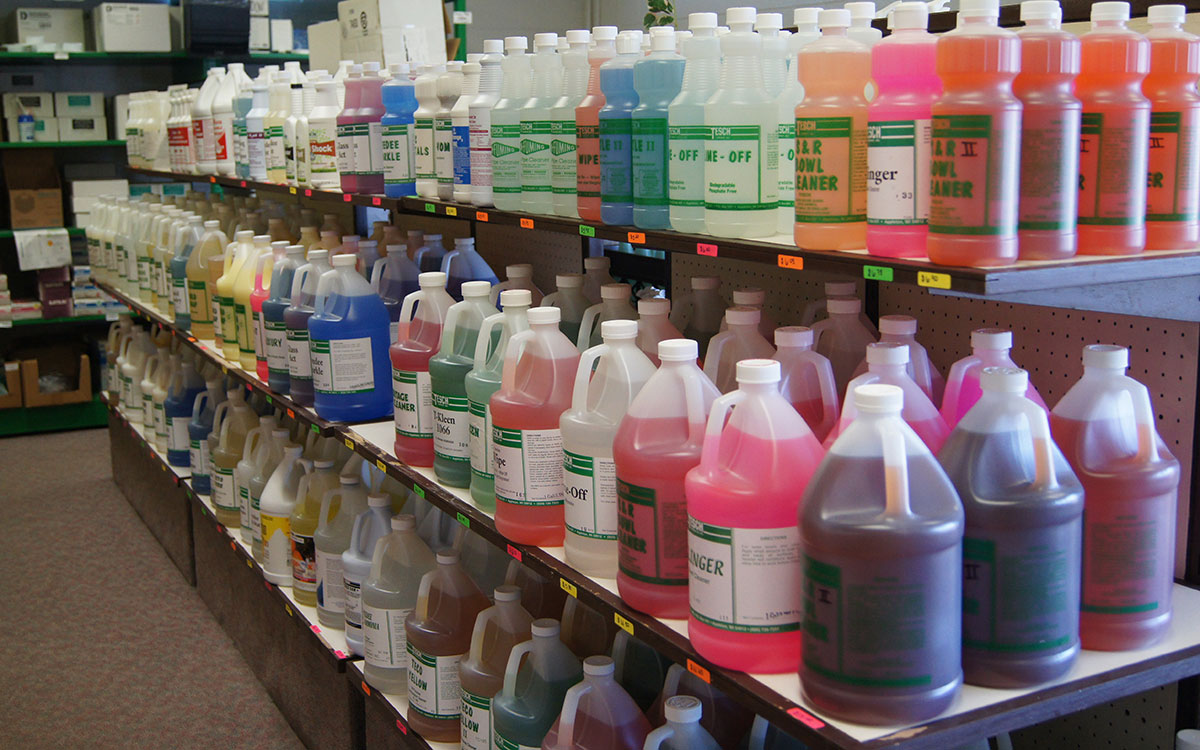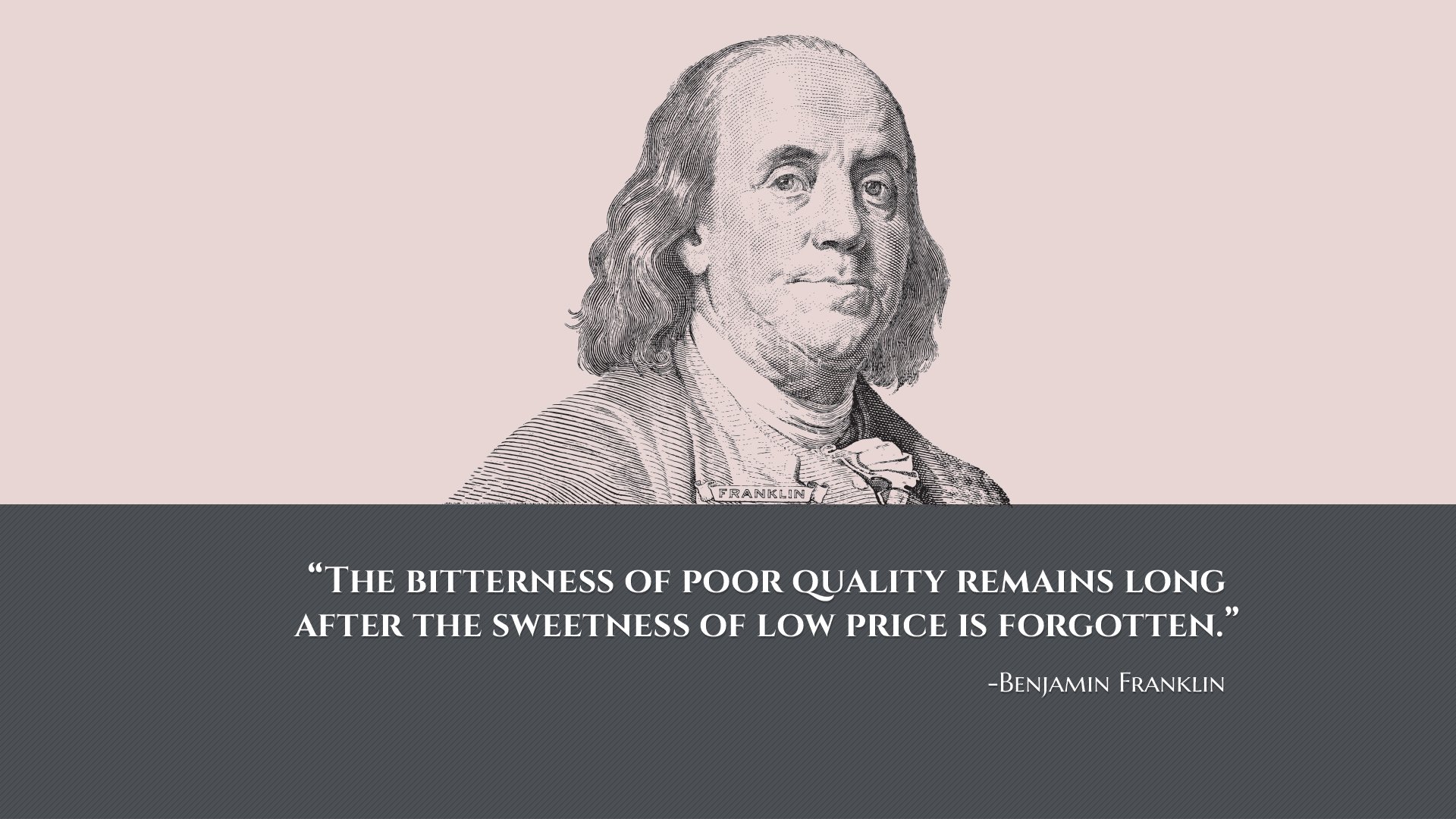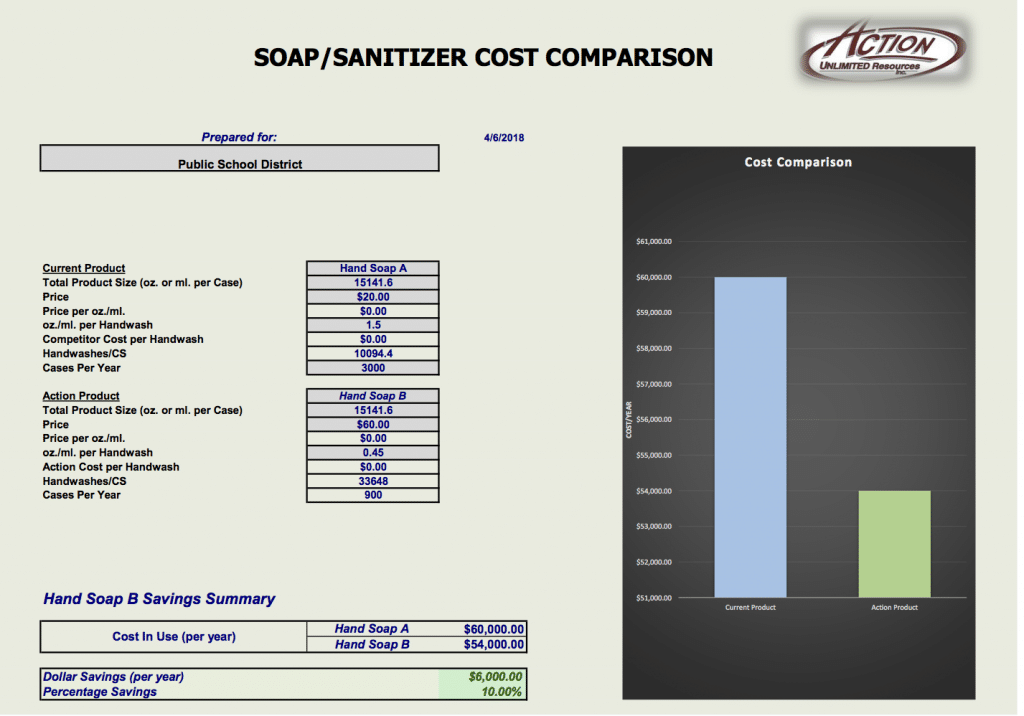5 Ways to Save Money on Janitorial Supplies

Who doesn’t like a deal?! Especially when buying operating necessities for your business like, supplies.
Supply purchasing is an easy opportunity to contribute to your bottom line, right?
Keep the tips below in mind for opportunities to save, and to better understand some of the common misconceptions associated with lower supply prices.
Did You Know? Lower Prices Can Cost You More
How can a lower price cost more?
Low-price goods may be cheaper, but price aside, is everything else equal?
It’s often hard to identify the reasons why some products are more expensive than others at the point of comparison, meaning those reasons get overlooked during the decision making process.
Consider this. When was the last time you made a purchase decision and compared your options not only based on the purchase units, but also by comparing the cost over an extended period such as a month or a year to shed light on the total spend?
Here are some factors to think about outside of just product price:
-
delivery costs
-
minimum order quantities
-
lead times, financing costs
-
product quality
-
product life expectancy
-
staff awareness
-
labor requirements
-
product acceptance
How were these listed on the quote? More times than not, quotes don’t actually address these critical factors! This leaves buyers to make costly missteps every day.
Sadly, high costs resulting from low price decisions add up quickly and can severely erode your bottom line if you purchase based on price per unit alone.

Money-Saving Tips
1. Understand the Product’s “Cost-In-Use”
Be clear about different product specifications and product uses. Consider in-use cost to compare competing products. When working with consultants or suppliers, ensure they provide proposals outlining the cost-in-use to better understand expected outcomes.
An example of “cost-in-use” calculation:
A school district is looking for the lowest price hand soap and puts out a bid for hand soap packed 4 gallons per case (15,141.6ML). The school district currently uses a liquid hand soap like this, and purchase 3,000 cases per year. Here are their two options:
The soap they currently use costs $20 per case. Each case contains 4 gallon bottles. When the soap is dispensed, the dispenser releases 1.5ML of liquid soap for every activation of the dispenser.
Hand soap from a new vendor costs $60 per case. Each case contains 4 gallon bottles. When the soap is dispensed, the dispenser releases .45ML of foam soap for every activation of the dispenser.
A traditional buyer not using cost-in-use will continue to purchase the same soap they currently use. For 3,000 cases, the school district can expect to spend $60,000 on hand soap for the upcoming school year.
A more savvy buyer will use a cost-in-use formula to determine whether the new vendor’s hand soap will cost less than $60,000 per year. The savvy buyer will switch to the new soap, with a total spend of $54,000 and savings of 10% on the total yearly purchases.

2. Consider Other Hidden Costs
Evaluate additional costs to acquire supplies through alternative sources. Will one option require more time or resources that will add hidden costs to the total cost of ownership (TCO)? This hidden factor can be avoided by detailing the existing process and comparing new proposals to that process to ensure proper comparison. When working with consultants or suppliers, ensure they provide proposals that clearly define the new process of acquisition in comparison with the existing process and its related costs.
3. Know How Much Money You Have Tied Up in Inventory
Consider the cost of the money you’ll have tied-up in holding inventory if you opt for larger quantities at lower pricing. Minimum orders, lead times, and service related changes can cause increased inventory holding costs. This hidden factor can be avoided by identifying historical holding/carrying levels and including this factor when you do your price comparison. When working with consultants and suppliers, ensure proposals identify this factor for your review.
4. Purchase According to Priorities
The reality is that different supplies can result in different outcomes when it comes to performance and quality of service. If you let performance decline, regaining the customer’s trust can be difficult if not impossible. Always identify the most important people associated with the organization you’re serving (for example: staff, guests, students, patients, executives, etc.) and what their priorities are. This will allow you to properly manage expectations and make purchasing decisions accordingly. When working with consultants and suppliers, ensure that proposals clearly quantify how the product will help achieve your desired goals for a client.
5. Avoid Increasing Labor Costs
What impact will the products you purchase have on staffing? Labor is a large driver of costs, and when using low price products leads to an increase in labor, you have a problem. Do a comparison of the existing scope of work and map out a plan to get the end result you want. By identifying the changes you need to make to achieve your organizational goals you can properly communicate those changes to the rest of your team. When working with consultants and suppliers, ensure that proposals clearly quantify impacts on staff labor.

Change is Good!
Change is a necessary component of continuous improvement; however, many people are resistant to change. Involving staff in decisions that result in change can reduce the challenges that appear because of cost savings decisions.
An Effective Cost Analysis
There are many opportunities for savings when it comes to buying supplies.
If you do a cost savings analysis and the result is simply lower pricing on a list of items, you’ve probably missed out on an opportunity to make impactful change in your business.
The most effective supply analysis will include recommendations for change that deliver significant improvement in outcomes, issue avoidance, and total cost optimization.
Qualified specialists in the JanSan industry can provide optimization analysis in exchange for an agreement of purchase backed by measurable improvements in important metrics.
This post was provided by Action Unlimited Resources, an established distributor of cleaning chemicals, supplies, and food service disposables.


